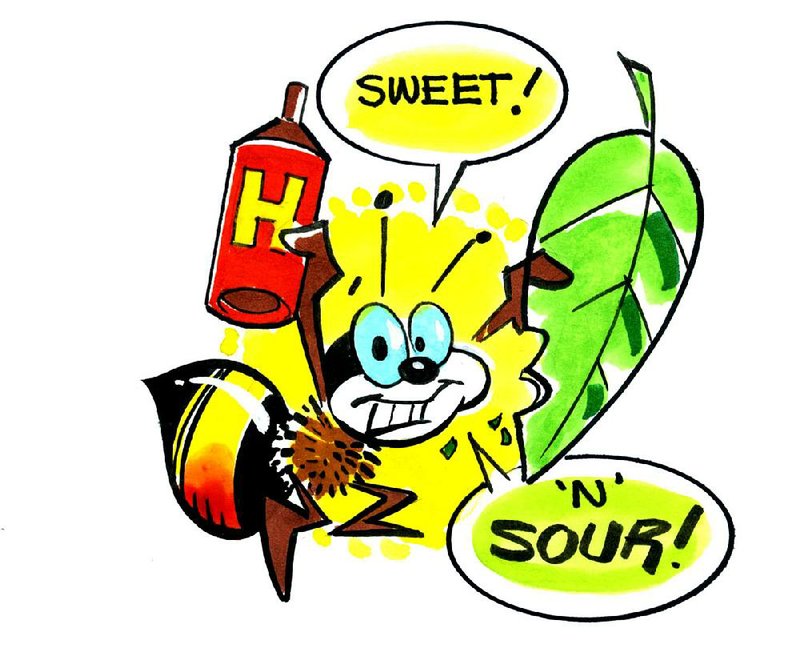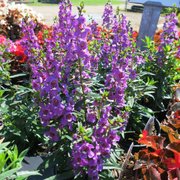Q I am a bee-keeper in Cave Springs and I would like to know if sourwood trees will grow here. The bees love sourwood trees, plus they are a beautiful tree even if I decide to quit keeping bees, but I can't find anyone that knows anything about them. I know Crystal Bridges has planted a few of them, but they are still pretty small trees. I finally found a nursery that is fairly close by that says they will grow. I would like a second opinion.
A Sourwood trees are beautiful, small trees that grow up to 25 feet in height. This member of the azalea family has pretty white panicles of blooms in late spring, followed by one of the prettiest red fall foliage colors of any tree. It is not as common in nurseries as other trees, and it does need a bit of tender loving care to get established. It likes an acidic, well-drained soil. It is not tolerant of heavy soils, too much moisture or drought conditions. But once established, it is a gorgeous tree, and well worth having in the garden, bees or no bees.
Q I planted a tomato plant earlier in the summer in a pot. It is very healthy and I have had lots of tomatoes, but before they turn red they are just gone. I put a netting around the plant to see if that would help and it has happened again. I am so frustrated because I had at least four nice ones. What can I do, or what do you think is eating them?
A My guess would be squirrels, but I have heard from folks who have trouble with raccoons and even rats. Try fastening the net at the bottom to see if that helps. Animal control can be a challenge to gardeners.
Q I have attached some photos of trees in our yard that have been attacked by worms [reader submitted photo]. As you can see, one tree is evidently dead and the second tree seriously wounded. Can you identify the type of worms and advise what to do about them? Are these worms a threat to other types of shrubbery? If so, what do we do to protect the other plants? Can either of the trees be saved given their current state of health?
A Wow, you have an impressive case of bagworms. These insects know how to use camouflage, building their protective covering out of the plant they are feeding on. Bagworms pass the winter as eggs inside the bags, with up to 300 eggs inside each bag. The eggs hatch in mid-May and the tiny larvae crawl out to feed. Each uses silk and bits of plant material to make a small bag that protects and camouflages it as it feeds and grows. They can also move from plant to plant with small, spinning strands of silk, which they use to "fly" in the wind. Bagworm caterpillars feed for four to six weeks, constructing and expanding the bag as they grow and feed, and withdrawing into it when disturbed. Bagworms prefer needle type evergreens, such as junipers, Eastern red cedars, Leyland cypress and arborvitae in particular, but will also occasionally feed on deciduous trees. In large amounts, the caterpillars can defoliate plants. Heavy infestations over several consecutive years, especially when coupled with other stresses, can lead to plant death.
Needle-type evergreen plants are the slowest to rebound, and as much damage as the totally brown one has, I would cut my losses and remove it. The other one can be salvaged, but sprays are no longer effective. By now your bagworms are probably finished feeding and in the resting or pupal stage. This fall, males will emerge from the bag in search of bags containing immobile females. After mating, the female lays several hundred eggs inside the bag, and then she leaves the bag and dies. The eggs remain in the bag on the plant until they hatch the following May. Hand pick and destroy as many of the bags as you can to reduce problems next year. Destroy the plant that you are removing. If you have this problem annually, you may want to be proactive and use a preventive insecticide beginning in mid-May next year. One application a week with BT (Bacillus thuringiensis) or similar insecticide will work. Three applications a year should suffice.
Q Please identify this plant [reader sent photo]. I bought it this spring and promptly lost the plastic information tag. I'm hoping it is a perennial. It receives at least six to eight hours of sun where it is planted. Also, any care instructions will be appreciated.
A The plant is a summer annual called Angelonia or summer snapdragon. Its blooms are purple, pink, white or bi-colored. It is a heat lover and will bloom from frost to frost, but you will need to replant each year. As with all annuals, it will bloom best with regular fertilization and water when really dry.
Janet B. Carson is a horticulture specialist for the University of Arkansas Cooperative Extension Service. Write to her at 2301 S. University Ave., Little Rock, Ark. 72204 or email her at
HomeStyle on 07/16/2016


